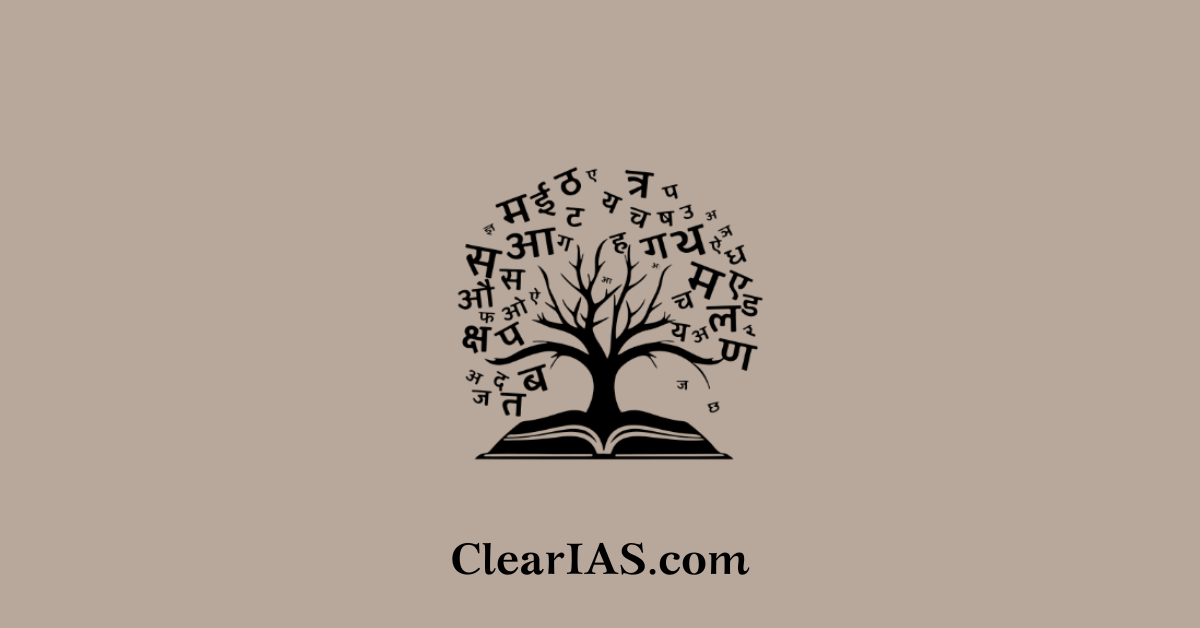
India’s linguistic diversity, enshrined in its Constitution, is one of the core features of its pluralistic democracy. The Three-Language Formula, introduced in the 1960s, was a key component of India’s education and language policy to promote national integration, linguistic equity, and multilingualism.
India’s linguistic diversity is both a source of cultural richness and a complex governance challenge. With over 22 official languages under the Eighth Schedule and hundreds of dialects, formulating a common language policy has long been a sensitive issue.
However, recent attempts to revise and implement it, particularly through the National Education Policy (NEP) 2020, have reignited debates, especially regarding the proposed inclusion of Hindi as the third language in non-Hindi-speaking states.
In theory, it promoted both the link language (Hindi) and the global language (English) while respecting regional identities.
Despite its theoretical inclusiveness, the formula has faced persistent resistance in several non-Hindi-speaking states, especially in the South and Northeast.
What is the Three-Language Formula?
The Three-Language Formula was introduced as part of India’s national education policy in the 1960s to promote national integration and multilingual competence. It aimed to:
- Encourage the study of Hindi, English, and a regional language.
- Foster linguistic harmony and facilitate communication across states.
The formula was designed with flexibility to accommodate linguistic diversity:
- In Hindi-speaking states: Hindi, English, and a modern Indian language (preferably from the South).
- In non-Hindi-speaking states: The regional language, English, and Hindi.
Resistance to Hindi as the Third Language
Several non-Hindi-speaking states have consistently opposed the mandatory inclusion of Hindi as a third language in primary education. Key reasons include:
- Cultural and Linguistic Identity
- States like Tamil Nadu view the imposition of Hindi as a threat to their Dravidian linguistic heritage.
- Language is closely tied to regional identity and self-respect movements, especially in South India.
- Historical Context
- The anti-Hindi agitations in Tamil Nadu (1937, 1965) created a strong political and emotional resistance to any perceived imposition.
- The legacy of these movements still shapes public opinion and policy in the state.
- Perceived Linguistic Imbalance
- Hindi is perceived to already enjoy greater institutional support, such as in Union government services, while regional languages face marginalisation.
- Mandatory Hindi could further privilege the Hindi-speaking population in all-India examinations.
- Administrative and Practical Concerns
- Many states face a shortage of qualified Hindi teachers and appropriate teaching materials.
- Imposing a third language without adequate infrastructure may strain the public education system, particularly in rural and tribal areas.
State Government Stances
Tamil Nadu
- Firmly opposes the Three-Language Formula and continues to implement a Two-Language Policy (Tamil and English).
- The State Government, across political parties, has maintained a consistent stand against Hindi imposition.
Karnataka, Kerala, and Andhra Pradesh
- Generally, follow the three-language formula in spirit, though with more flexibility.
- Hindi is often taught as an optional third language, not compulsorily.
Northeastern States
- Emphasis is placed on tribal languages, local dialects, and English.
- Hindi, while taught in some schools, is not universally accepted as the third language due to perceived cultural dissonance.
NEP 2020: What Does It Say?
The National Education Policy (NEP), 2020, introduces significant reforms in language education:
- Emphasis on Multilingualism
- Promotes the Three-Language Formula but with flexibility in implementation.
- Encourages learning three languages, at least two of which should be native to India.
- Medium of Instruction
- Recommends the mother tongue/regional language as the medium of instruction at least till Grade 5, preferably till Grade 8.
- Emphasizes that education in the local language improves cognitive development and conceptual clarity.
- Non-Imposition Clause
- The policy explicitly states that no language will be imposed on any state or student.
- Recognizes the importance of linguistic diversity and gives autonomy to states and institutions in implementing the policy.
Constitutional and Federal Dimensions
The language debate touches on key principles of the Indian Constitution:
- Articles 29 and 30 protect the rights of minorities to conserve their language and culture.
- Articles 343 to 351 provide for the use of Hindi and other official languages of the Union and States.
- Eighth Schedule recognizes 22 Indian languages, without assigning primacy to any.
In a quasi-federal structure, the language policy must respect regional autonomy, especially in subjects like education, which fall under the Concurrent List.
Any attempt to centralise language learning through the backdoor may erode the federal balance envisioned by the Constitution.
Way forward
The resistance to Hindi underlines deeper issues about India’s federal structure, cultural autonomy, and equity in education.
- A uniform policy on language, if imposed without sensitivity to regional aspirations, risks alienating communities and exacerbating linguistic majoritarianism.
- At the same time, the goals of national integration, mobility, and communication cannot be ignored.
- A multilingual citizenry enhances democratic participation, cognitive ability, and global competitiveness.
- The real challenge lies in balancing national unity with diversity, in nurturing a language policy that fosters interconnectedness without uniformity.
In news
On April 16, 2024, the Maharashtra government issued an order mandating Hindi as a third language from Grade 1 to Grade 5 in all Marathi and English medium schools affiliated with the State Board. This was in line with NEP 2020, which emphasises the three-language model and early language learning.
The linguistic debate in Maharashtra continues days after the Maharashtra government withdrew two orders introducing Hindi as the third language in primary education across Marathi and English-medium State Board schools.
Previously:
-
Only two languages were taught from Grades 1 to 4 in these schools.
-
The third language was introduced from Grade 5 onwards.
-
The three-language policy was already in place for other medium (e.g., Urdu, Gujarati).
However, following public backlash, the government withdrew both circulars. This came amid concerns over:
-
Perceived Hindi imposition
-
Lack of preparedness (infrastructure, teachers)
-
Federal autonomy and linguistic identity
The state has now appointed a committee under economist Dr. Narendra Jadhav to re-examine the implementation of the three-language policy in Maharashtra.
Conclusion
The debate over the Three-Language Formula reflects India’s complex linguistic federalism.
While the Centre emphasises national integration and linguistic competence, states assert their right to preserve cultural identity and local autonomy.
NEP 2020 attempts a balanced, non-imposition approach, but its success will depend on cooperative federalism, adequate teacher training, and context-sensitive implementation.
To ensure that language policy becomes an instrument of unity in diversity, several steps are crucial:
- Central and state governments must work together to ensure consensual implementation of language education frameworks.
- Adequate investment in teacher training, curriculum development, and infrastructure is essential for effective multilingual education.
- Students and parents should be allowed informed choices rather than coerced compliance.
The future of India’s language policy must rest not on compulsion but on dialogue, mutual respect, and pluralism, true to the spirit of Indian democracy.
Related articles:







Leave a Reply